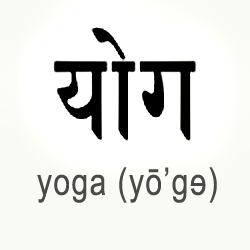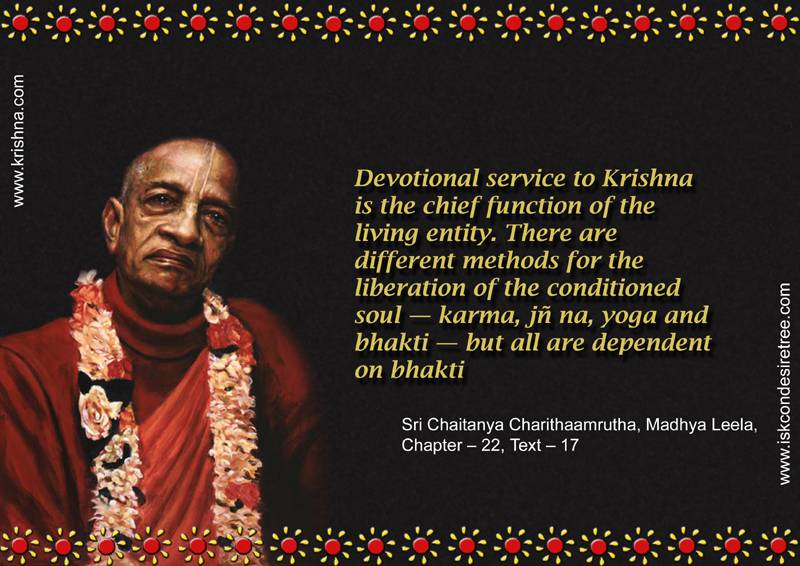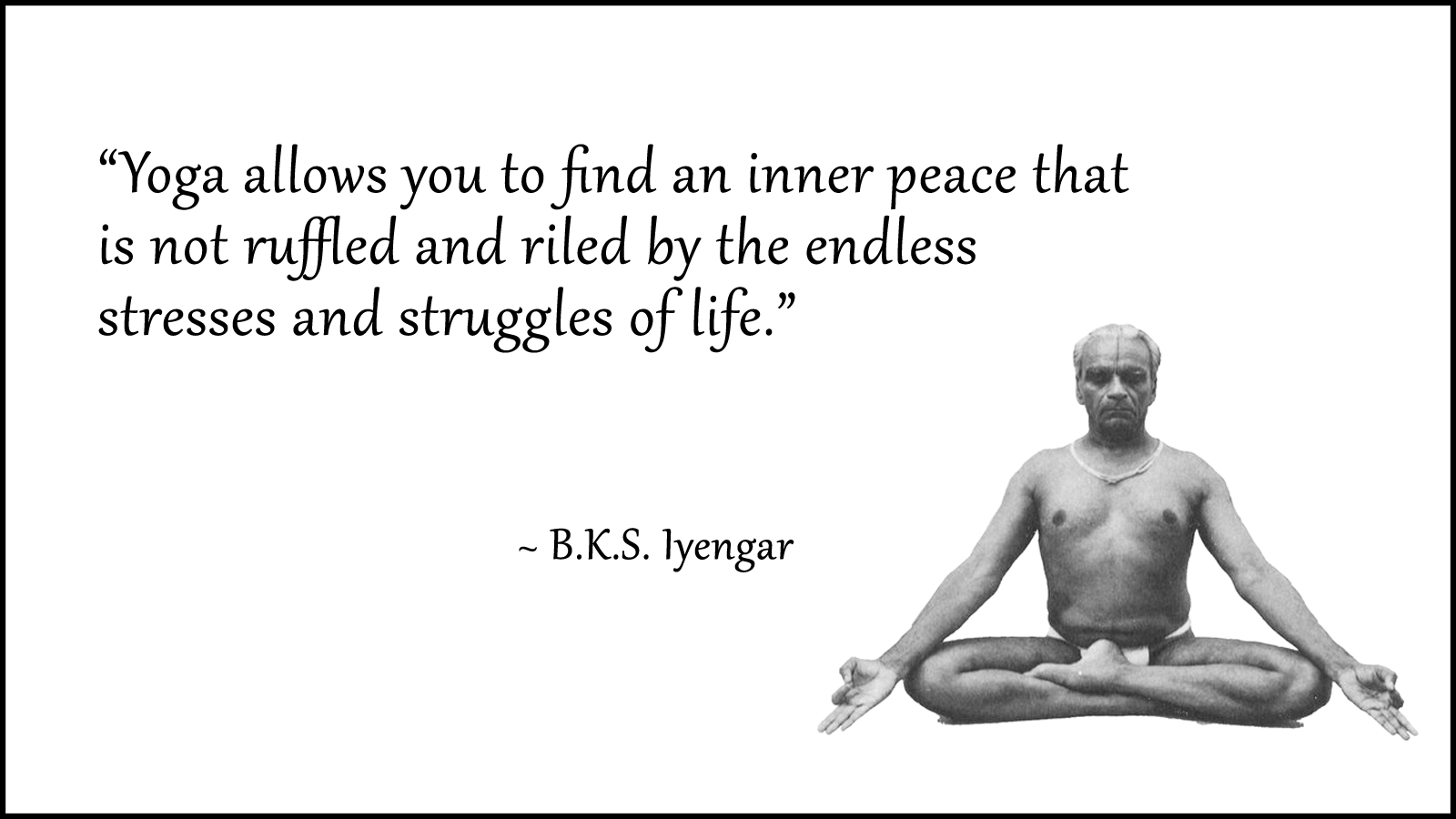What is Yoga? In this article we will see some high level details about what is yoga, some definitions and reference on Yoga.
Yoga Means
IN VEDIC SANSKRIT, THE MORE COMMONLY used, literal meaning of the Sanskrit word yoga which is “to add”,  “to join”, “to unite”, or “to attach” from the root yuj, already had a much more figurative sense, where the yoking or harnessing of oxen or horses takes on broader meanings such as “employment, use, application, performance” (compare the figurative uses of “to harness” as in “to put something to some use”). All further developments of the sense of this word are post-Vedic. More prosaic moods such as “exertion”, “endeavour”, “zeal”, and “diligence” are also found in Epic Sanskrit.
“to join”, “to unite”, or “to attach” from the root yuj, already had a much more figurative sense, where the yoking or harnessing of oxen or horses takes on broader meanings such as “employment, use, application, performance” (compare the figurative uses of “to harness” as in “to put something to some use”). All further developments of the sense of this word are post-Vedic. More prosaic moods such as “exertion”, “endeavour”, “zeal”, and “diligence” are also found in Epic Sanskrit.
What is Yoga in Sanskrit
There are very many compound words containing yog in Sanskrit. Yoga can take on meanings such as “connection”,  “contact”, “method”, “application”, “addition”, and “performance”. In simpler words, Yoga also means “combined”. For example, guṇá-yoga means “contact with a cord”; chakrá-yoga has a medical sense of “applying a splint or similar instrument by means of pulleys (in case of dislocation of the thigh)”; chandrá-yoga has the astronomical sense of “conjunction of the moon with a constellation”; puṃ-yoga is a grammatical term expressing “connection or relation with a man”, etc. Thus, bhakti-yoga means “devoted attachment” in the monotheistic Bhakti movement. The term kriyā-yoga has a grammatical sense, meaning “connection with a verb”. But the same compound is also given a technical meaning in the Yoga Sutras (2.1), designating the “practical” aspects of the philosophy, i.e. the “union with the Supreme” due to performance of duties in everyday life.
“contact”, “method”, “application”, “addition”, and “performance”. In simpler words, Yoga also means “combined”. For example, guṇá-yoga means “contact with a cord”; chakrá-yoga has a medical sense of “applying a splint or similar instrument by means of pulleys (in case of dislocation of the thigh)”; chandrá-yoga has the astronomical sense of “conjunction of the moon with a constellation”; puṃ-yoga is a grammatical term expressing “connection or relation with a man”, etc. Thus, bhakti-yoga means “devoted attachment” in the monotheistic Bhakti movement. The term kriyā-yoga has a grammatical sense, meaning “connection with a verb”. But the same compound is also given a technical meaning in the Yoga Sutras (2.1), designating the “practical” aspects of the philosophy, i.e. the “union with the Supreme” due to performance of duties in everyday life.
What is Yoga by Great Masters
According to Dasgupta, the term yoga can be derived from either of two roots, yujir yoga (to yoke) or yuj samādhau 
 (to concentrate). Someone who practices yoga or follows the yoga philosophy with a high level of commitment is called a yogi (may be applied to a male or a female) or yogini (traditionally denoting a female). BKS Iyengar said, Yoga helps to find the inner peace, Srila Prabhupada the founder Acharya of Iskcon says, while there are many yoga for liberation ultimately everything culminates in bhakthi Yoga, devotional service to Lord Krishna, who is supreme Personality of Godhead. Prabhupada mentions Krishna as
(to concentrate). Someone who practices yoga or follows the yoga philosophy with a high level of commitment is called a yogi (may be applied to a male or a female) or yogini (traditionally denoting a female). BKS Iyengar said, Yoga helps to find the inner peace, Srila Prabhupada the founder Acharya of Iskcon says, while there are many yoga for liberation ultimately everything culminates in bhakthi Yoga, devotional service to Lord Krishna, who is supreme Personality of Godhead. Prabhupada mentions Krishna as
summum bonum, who is the one source of all energy and is the Prime benefactor of all that is created. Art of Living, Founder Sri Sri Ravishankar says, that the wave uniting with its depth is Yoga. Sri Sri also advices not to take Yoga only for physical benefits rather use it to reach out high spiritually and reach infinity.
DIFFERENT YOGA SYSTEMS
The four basic types of yoga discussed in Bhagwad gita are Karma yoga, Jnana Yoga, Ashtanga or Hatha Yoga and Bhakthi Yoga.
Yoga means union of body, mind and soul and realizing who we truly are. It is a practical science aiming at the realization of the ultimate self. In Bhagwad gita 8.15 it is mentioned, “dukhalayam asasvatam”.
This place is full of miseries so one has to realize it, Srila Prabhupada founder, Iskcon says. Unless we understand that this place is miserable, there is no question how to get out of it. The major portion of the great Bhagwad gita focusses on several paths of Yoga. Why major portion of it involves talking about Yoga, because that is what needed to lead a life in a miserable place. Otherwise life will be full of sufferings.
Karma-yoga (the yoga of selfless action)
The word karma is derived from the Sanskrit kri, meaning ‘to do’. In its most basic sense karma simply means action, and yoga translates to union. Thus “karma yoga” literally translates to the path of union through action. Karma-yoga begins with the understanding that selfish action binds the soul. By giving up the fruits of action, one is relieved from the reactions to self-centred activities.
Jnana-yoga (philosophical research and wisdom)
Whereas karma-yoga usually involves bhukti, enjoying worldly pleasure, jnana-yoga promotes knowledge through seclusion, study, and sense abnegation. Activities and the necessities of life are minimized. Since the pursuit of wisdom and realization is not simply an academic exercise, much emphasis is placed on becoming free from the sensual desires that delude the soul.
Astanga/RajaYoga (physical exercises and meditation)
Asta means “eight” and anga means “part.” Astanga-yoga is a process divided into eight distinct and essential stages, based on the Yoga Sutras of the sage, Patanjali. It is explored succinctly in the Bhagavad-gita. Many modern practices of yoga are related. However, Patanjali’s system requires the observation of standards difficult for most contemporary practitioners. The sutras discuss super states of consciousness and the obtainment of eight main types of mystic power, such as the ability to become “smaller than the smallest.” India is replete with tales of such feats, which are largely accepted as feasible. Nonetheless, Patanjali warns the yogi not to become enamored of such mystic powers but to keep the mind fixed on leaving the material realm. The highest perfection is to focus on God within.
Raja Yoga is an exact science. It aims at controlling all thought-waves or mental modifications. It concerns with the mind, its purification and control. Hence it is called Raja Yoga, i.e., king of all Yogas. It is otherwise known as Ashtanga Yoga i.e., Yoga with eight limbs.
The eight limbs of Ashtanga Yoga are: Yama (self-restraint), Niyama (religious observances), Asana (posture), Pranayama (restraint of breath), Pratyahara (abstraction of senses), Dharana (concentration), Dhyana (meditation) and Samadhi (super-conscious state). Yama is practice of Ahimsa (non-injury), Satya (truthfulness), Asteya (non-stealing), Brahmacharya (celibacy) and Aparigraha (non-covetousness) in thought, word and deed. This is the foundation of Yoga. Niyama is observance of the five canons viz., Saucha (internal and external purity), Santosha (contentment), Tapas (austerity). Svadhyaya (study of religious books and repetition of Mantras) and Ishvara-Pranidhana (worship of God and self-surrender). Cultivate Maitri (friendship with equals), Karuna (mercy towards inferiors), Mudita (complaisancy towards superiors), Upeksha (indifference towards wicked people). You can eradicate jealousy and hatred and attain peace of mind. Ascend the ladder of Yoga patiently through its different rungs and attain the highest summit of the ladder, i.e., Asamprajnata Samadhi, wherein all Samskaras (impressions) which bring about successive births are absolutely fried up.
Bhakti-Yoga (the path of devotional service)
The popular path of bhakti is considered by many to be only a stepping-stone to what they consider the more difficult process of knowledge. Other groups consider bhakti to be higher than jnana, considering that “the heart rules the head.” Some consider all paths to be equal. Here as an act of devotion, a priest offers arti (see The Arti Ceremony) to the temple deities.
In today’s modern world, what is missing? Compassion. Yoga can develop compassion naturally. Once compassion develops then everything else follows. Love for others, love for nature, Love for every single thing on the earth thereby feeling the connectedness with everything. Lord Krishna says that I am present in everybody’s heart and if you realize that then you realize God in everybody.
Hatha Yoga
Hatha Yoga relates to the restraint of breath (Pranayama), Asanas, Bandhas and Mudras. ‘Ha’ and ‘tha’ mean the union of the sun and the moon, union of Prana and Apana Vayus. ‘Hatha’ means any tenacious practice till the object or end is achieved. Trataka, standing on one leg, (a kind of Tapas) and similar poses are all Hatha Yoga practices. Hatha Yoga is inseparable from Raja Yoga. Raja Yoga begins where Hatha Yoga ends. Raja Yoga and Hatha Yoga are interdependent. Raja Yoga and Hatha Yoga are the necessary counterparts of each other. No one can become a perfect Yogi without a knowledge and practice of both the Yogas. Hatha Yoga prepares the student to take up Raja Yoga.
A Hatha Yogi starts his Sadhana with body and Prana; a Raja Yogi starts his Sadhana with his mind; a Jnana Yogi starts his Sadhana with Buddhi or intellect and will.
A Hatha Yogi gets Siddhis (psychic powers) by uniting Prana and Apana and by taking the united Prana-Apana through the six Chakras (centres of spiritual energy) to Sahasrara at the crown of the head. A Raja Yogi gets Siddhis by Samyama, i.e., combined practice of Dharana, Dhyana and Samadhi at one time. A Jnana Yogi exhibits Siddhis through pure will or Sat-Sankalpa. A Bhakta gets Siddhis through self-surrender and the consequent descent of grace. Kriyas, viz., Neti, Dhauti, Nauli, Basti, Tratak and Kapalabhati belong to Hatha Yoga. All need not practise these Kriyas. Those who have got much phlegm in the body should practise these Kriyas.
Kundalini Yoga
Kundalini Sakti is the coiled-up, dormant, cosmic power that underlies all organic as well as inorganic matter. It is the primordial energy that lies at the basal Muladhara Chakra in a dormant, potential state. Kundalini Yoga is that Yoga which treats of Kundalini Sakti, the seven Chakras or centres of spiritual energy, the arousing of the sleeping Kundalini Sakti and its union with Lord Siva in Sahasrara Chakra at the crown of the head. The seven Chakras are pierced by the passing of Kundalini Sakti to the top of the head.
The seven Chakras are: Muladhara (at the anus), Svadhishthana (at the root of the organ of generation), Manipura (at the navel), Anahata (in the heart), Visuddha (in the neck), Ajna (in the space between the two eyebrows) and Sahasrara (at the crown of the head).
Nadis are the astral tubes that carry Pranic currents. They cannot be seen by naked eyes. They are not the ordinary nerves, arteries and veins. There are 72,000 Nadis. Among them three are important. They are Ida, Pingala and Sushumna. Sushumna is the most important one, because Kundalini passes through this Nadi only. The first step in Kundalini Yoga is the purification of Nadis. When Sushumna is pure then only Kundalini will pass through it. Purification of Nadis is done by the practice of Pranayama.
The Yogi opens the mouth of Sushumna Nadi through Pranayama, Bandhas and Mudras and awakens the sleeping Kundalini and takes Her to Sahasrara at the crown of the head through the lower six Chakras. Kundalini sleeps in the Muladhara in 31/2 coils. The three coils represent the three Gunas and half coil represents the Vikritis.
Kundalini is awakened through Pranayama, Asanas and Mudras by Hatha Yogins, through concentration by Raja Yogins, through devotion and perfect self-surrender by Bhaktas or devotees; through analytical will, by the Jnanis; by Japa of Mantra and by the grace of the Guru.
If you are pure and free from all desires, Kundalini will awaken by itself and you will be benefited. If you awaken Kundalini by violent methods, forcibly, when your heart is impure, when desires lurk in your mind, you will come across temptations of various sorts, when you move from plane to plane, you will have a downfall. You will have no strength of will to resist these temptations.
That aspirant who has firm faith in Yogic Sastras, who is courageous, devotional, humble, generous, merciful, pure and dispassionate, can easily awaken Kundalini and attain success in Samadhi. He should also be equipped with right conduct and self-restraint; he should constantly engage himself in the service of his Guru and be free from lust, anger, Moha, greed and vanity.
